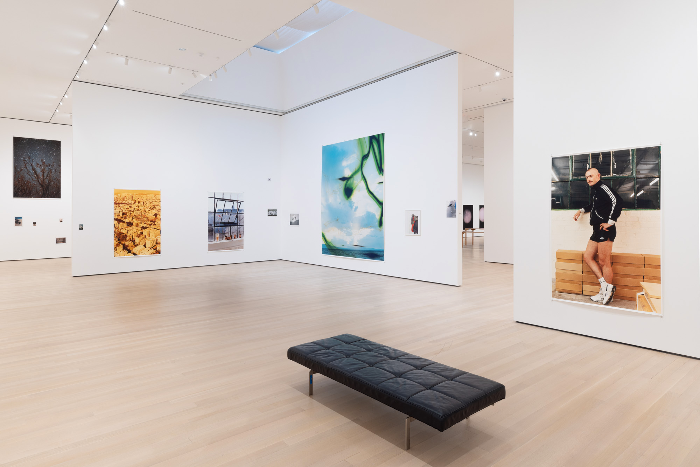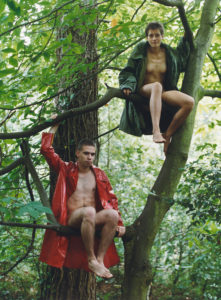Wolfgang Tillmans Takes MoMA by Storm
The world in which Tillmans came of age was studded with underground clubs and independent magazines, defined by a wall that fell, and marked by dreams and disease. Let us now praise not so famous men.

“Wolfgang Tillmans: To look without fear,” at the Museum of Modern Art, is a show that certainly believes that more is more. The photographer’s first art museum survey in New York City, it collects 350 of Mr. Tillmans’s photographs, videos, and multimedia installations, and takes up the entirety of the museum’s sixth floor, images sicced high on bare walls. Running through the new year, it looks and feels like a blockbuster.
MoMA explains that “the decisive logic” of Mr. Tillmans’s work is “visual democracy.” His most famous quotation is “if one thing matters, everything matters,” and the subjects of his photography are suitably catholic, ranging from still life like fruit on a window sill to an iPhone leaning against a glass of water to bodies naked, singly and alone. All of these are delivered with an off-kilter perspective that feels either too close or too far, and entirely raw.
The photographs are set against bare white walls with no adjacent information. This shouldn’t bother the casual viewer, as the photos, a handful of which are explicit, do a fine job speaking for themselves. “Tukan” shows the colorful bird in the foreground, somehow both large and small, a miracle captured at close range. At eye level, it feels like the viewer has been cut down to size, seeing the world through this bird’s eye.
“Lutz & Alex sitting in the trees,” one of Tillmans’s most famous pictures, shows a man and woman, both clad in coats, perched on branches, their miens both impish and innocuous. Their postures are childlike, but their bodies are those of adults, giving the image an uneasy sensuality, as if they have reverse commuted back to the Garden of Eden, sans innocence. He looks down, she looks straight ahead, issuing invitations and warnings both. Balanced precariously, they summon the viewer to go out on a limb.

For all of its daring, Mr. Tillmans’s work has garnered bushels of acclaim. In 2000, he was the first non-British person and first photographer to win the Turner Prize. Born in 1968, he is a member of the Akademie der Künste at Berlin, and the Royal Academy of Arts at London, as well as the recipient of the 2015 Hasselblad Foundation International Award in Photography. Critic Jerry Saltz praises his “slackerlike beauty and nonchalance.”
“Smokin Jo” is an image of a disc jockey in a golden dress, vivid and pensive against a blurred background, as if she were the lyrics and the city behind her the undulating melody. Another portrait, this time of a planet and not a person, is “Venus transit,” showing a purple sun set against a deep black void, with a small dot traversing its surface; that’s Venus. Mr. Tillmans caught the view in 2004, noting that it “was moving to see the mechanics of the sky.”
If “Venus transit” captures the cosmos, “Lüneburg (self)” is a more intimate venture. Featuring that iPhone leaning against a bottle of water. Mr. Tillmans himself is just visible on the screen, shooting from his bed. It is a riff on “Las Meninas” and countless other works that put the artist in the picture, weaving the making of the work into its finished subject. In an age where images are everywhere, it asks which ones belong in museums.
On that score, Mr. Tillmans is the consummate insider/outsider, the chairman of the Institute for Contemporary Art and onetime chronicler of the acid house club scene of the 1990s. His work is at home in august museums, and his camera records scenes of lust and anarchy but also quiet introspection and a lovely study of drapery, all folded and creased fabrics that looked like they were studied from Michelangelo’s “Pietà.”
Mr. Tillmans exhibits original prints that his team hangs up with clothespins and tape, giving the galleries they grace a haphazard feel. There are no frames, and no throat clearing curatorship. The show is a portal to the world in which Mr. Tillmans came of age as an artist, studded with underground clubs and independent magazines, defined by a wall that fell, and marked by dreams and disease. Let us now praise not so famous men.

